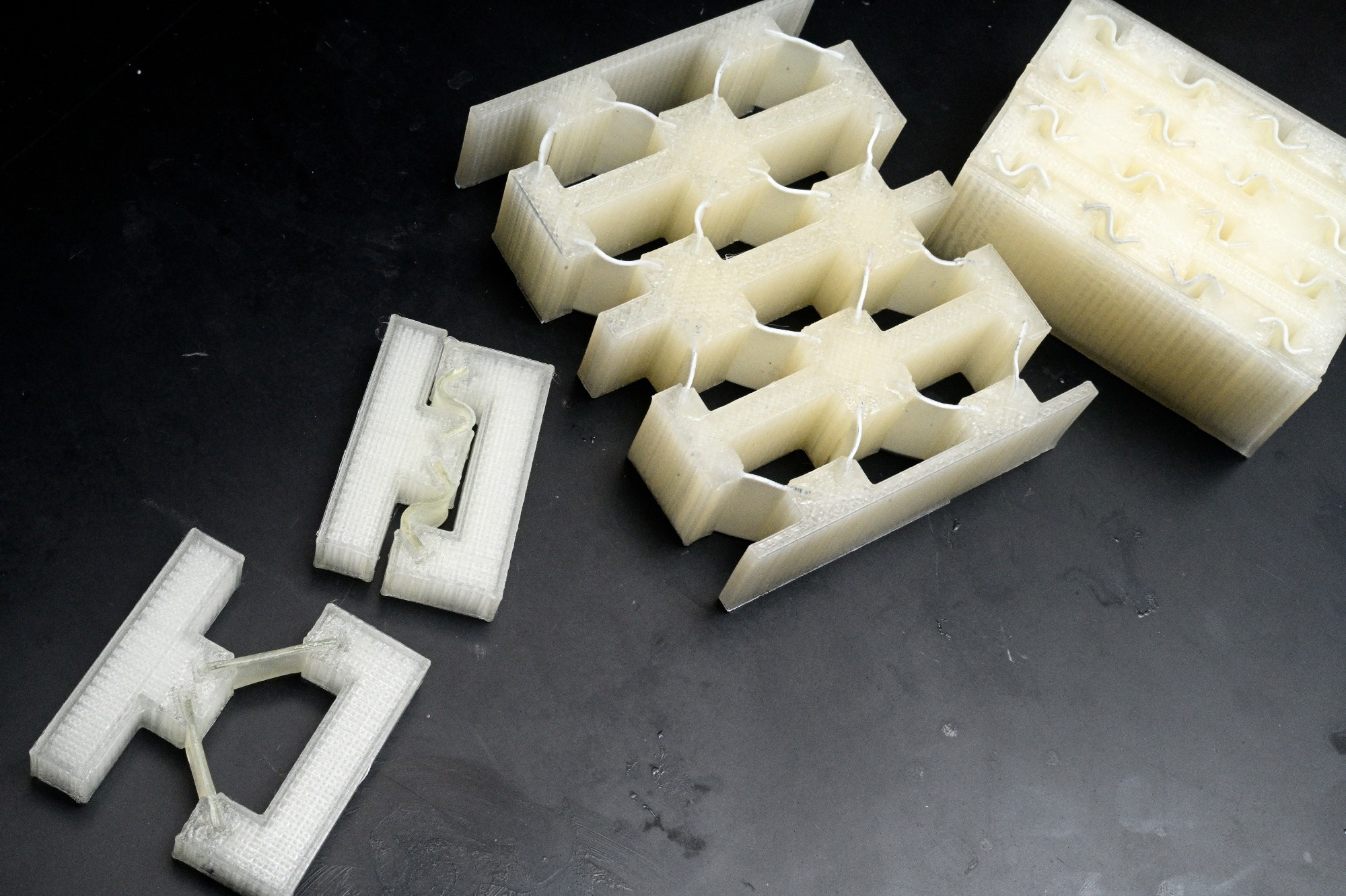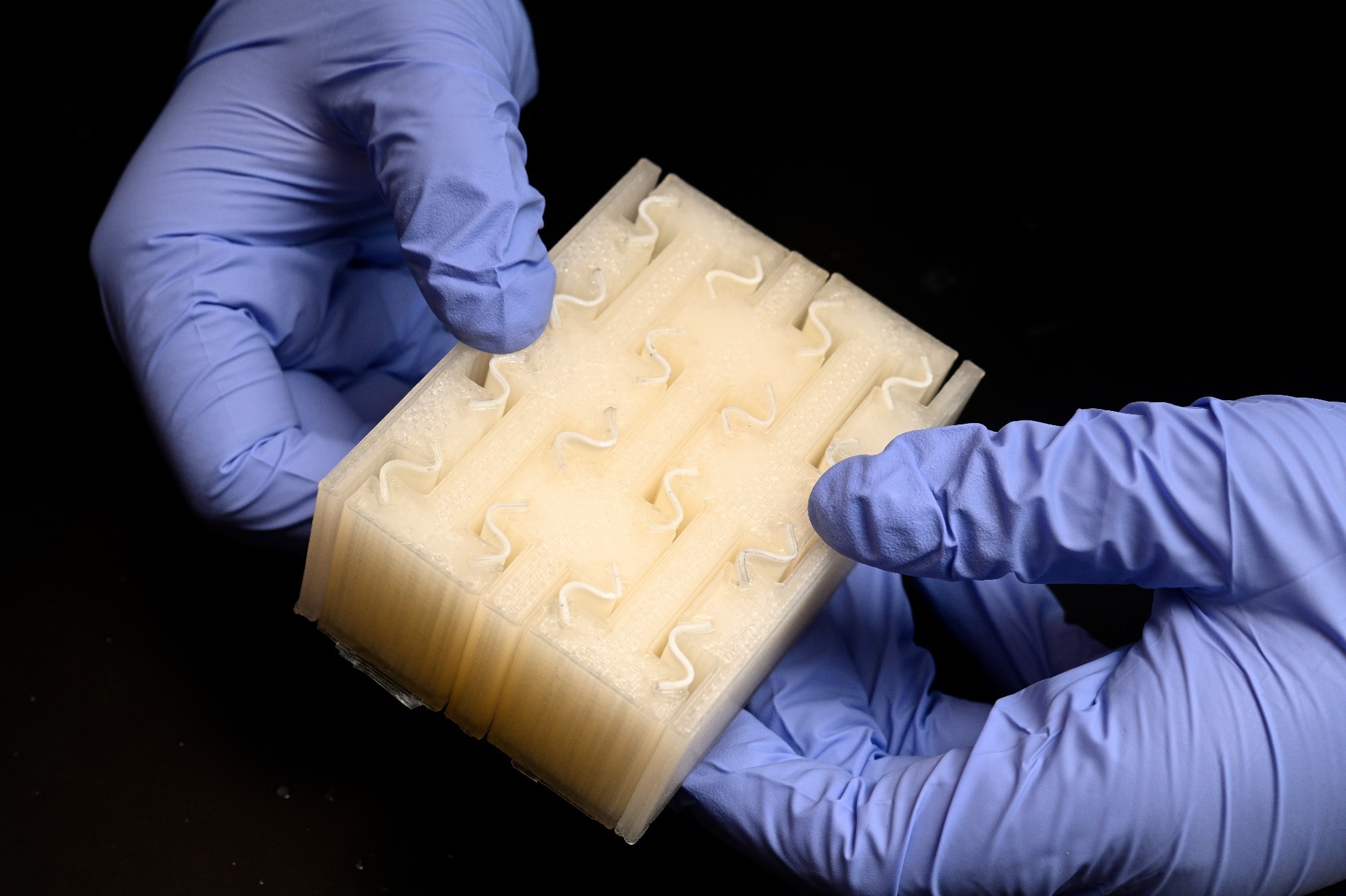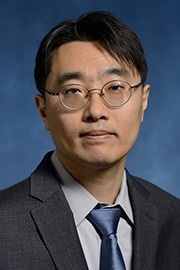AZoM speaks with Sung Hoon Kang from Johns Hopkins University about his research into a material that protects like metal upon impact but is lighter and tougher than metal. This novel foam-like substance could be a potential game-changer for helmets, body armor, and automobile and aerospace parts.
Energy-absorbing materials are used in many daily and advanced applications for vibration isolation and impact protection. What inspired your research into investigating the energy absorption capacity of liquid crystal elastomers (LCEs)?
We had observed that the standard materials for protective devices were heavy, unable to perform well with high-speed impacts and were not reusable. Thus, we decided to try and improve their energy absorption capacity from high-speed impacts while also increasing reusability and reducing weight.
We focused on liquid crystal elastomers (LCEs), as they have ideal characteristics for this application. They are softer than typical elastomers under static conditions while transforming into hard, shock-absorbing plastics upon high-speed impact.

Image Credit: Johns Hopkins University
What are high energy-absorbing LCEs, and how do they absorb energy?
Liquid crystal elastomers (LCEs) are highly dissipative compared to conventional elastomers. The extraordinary dissipative behavior comes from the unique coupling of viscoelastic deformation of the polymer networks and the reorientation of liquid crystalline components (mesogens). Here, the materials are arranged into multi-layered structures that are repeated to amplify the energy absorption capability. Introducing the foam-like geometry and stacking them along the loading direction allowed us to have a synergy between material and geometry, thus achieving a much higher energy absorption density (=energy absorption per volume) compared with that of a bulk material. This synergistic interaction between viscoelastic dissipation from material and snap-through buckling of structure also caused the energy absorption density to increase with the number of stacking layers.
What are some of the problems associated with these materials as they exist today?
Currently, there are challenges associated with the synthesis and manufacturing of LCEs. Our current LCE synthesis protocol takes several days and our manufacturing approach is not suitable for a large number of stacked foams. So, we need new approaches for the synthesis and manufacturing of LCEs to address the issues.
Can you give an overview of how you created an improved LCE?
We harnessed the energy dissipation capabilities of LCEs by designing foam-like, multilayered structures that amplify the energy dissipation density upon impact. The structures consist of repeating unit cells of tilted LCE beams sandwiched between stiff supports. Multilayered geometries were fabricated by making LCE unit cells stacked on top of each other.
What advantages are conferred by changing the degree of mesogen alignment and the loading direction relative to the director?
The energy absorption density of architected LCE can be improved by changing the degree of mesogen alignment and the loading direction relative to the director compared to a non-aligned case.

Image Credit: Johns Hopkins University
How did you go about testing the efficacy of this material, and how did it compare to existing alternatives?
We tested the efficacy of our material by measuring energy absorption density at a wide range of strain rates (i.e., speed) using three different machines as no single machine can cover the range. For a strain rate of 600 s−1, the foam-like unit exhibited up to a 5 MJ m−3 energy absorption density, which is over two orders of magnitude higher than the same structure tested at a low strain rate (6✕10-3 s-1).
We compared the performance of our material with existing alternatives and found that our material has orders of magnitude higher energy absorption density than existing foams with a similar density and has comparable performance to that of metals at impact condition, which are irreversible and have one to two orders of higher density.

Image Credit: Johns Hopkins University
What couldn’t you test, and how do you intend to address this in the future?
Experiments showed that the material was able to withstand strikes from objects weighing about 4 to 15 pounds, coming at speeds of up to about 22 miles per hour. The tests were limited to 22 miles per hour due to the limits of the testing machines in our school, but we are confident that our material could safely absorb even greater impacts. In the future, we would like to find machines with much higher testing speed capability to address this issue.
What are the potential applications of this novel material, and what industries would benefit from it the most?
The potential applications include helmets, body armors and shock/vibration absorbers for vehicles and aircraft. The new material can be attractive to industries where reusable and lightweight energy absorption capability is desirable such as the automotive, aerospace, and sports equipment industry.
What hurdles stand in the way of mass marketing this material — for example, can its production be scaled up?
For mass marketing of this material, we need to optimize design and processing as the current form of the material is not suitable for mass production.
What kind of partnerships are you looking for to potentially distribute your material?
We are looking for partnerships with industries to design, fabricate, and test next-generation reusable lightweight energy-absorbing materials tailored for specific applications.
After the success of your initial study, what are the next steps for your research, and what partners do you hope will accompany you on this journey?
For our initial study, we used a beam made of LCE for a simple 1D metastructure. Greater enhancement of energy absorption is expected through systematic structural design in the future. We hope to work with researchers working on machine learning to optimize the design for better energy absorption. We are also assessing other mechanisms for improving the material’s strength and energy absorption capability. We hope to work with researchers working on material chemistry and processing on this journey.
What else can our readers expect to see regarding shock-absorbing materials in the coming years?
In the coming years, there could be progress related to all aspects of shock-absorbing materials developments. For example, designs tailored for specific applications based on measurement data, syntheses of materials with better shock-absorption and multifunctional materials that can measure impact energy and provide protection, processing methods for controlling the microstructure of the materials for improving the shock-absorbing performance, and scalable manufacturing methods for new materials.
About Sung Hoon Kang
 Sung Hoon Kang is an Assistant Professor in the Department of Mechanical Engineering, Hopkins Extreme Materials Institute, and Institute for NanoBioTechnology at Johns Hopkins University. He earned a Ph.D. degree in Applied Physics at Harvard University and M.S. and B.S. degrees in Materials Science and Engineering from MIT and Seoul National University, respectively. Sung Hoon has been investigating solutions to address current challenges in engineering materials, structures and devices with applications including resiliency, sensing, energy, and healthcare. In particular, he investigates synthesis and manufacturing of materials and structures with novel properties based on principles of mechanics and physics and tools such as numerical modeling, 3D printing, 3D structural/material/mechanical characterizations, and in vitro/in vivo testing.
Sung Hoon Kang is an Assistant Professor in the Department of Mechanical Engineering, Hopkins Extreme Materials Institute, and Institute for NanoBioTechnology at Johns Hopkins University. He earned a Ph.D. degree in Applied Physics at Harvard University and M.S. and B.S. degrees in Materials Science and Engineering from MIT and Seoul National University, respectively. Sung Hoon has been investigating solutions to address current challenges in engineering materials, structures and devices with applications including resiliency, sensing, energy, and healthcare. In particular, he investigates synthesis and manufacturing of materials and structures with novel properties based on principles of mechanics and physics and tools such as numerical modeling, 3D printing, 3D structural/material/mechanical characterizations, and in vitro/in vivo testing.
His research has been supported by AFOSR, NSF, NIH, ARO, ONR, State of Maryland, and private foundations. Throughout his career, Sung Hoon has co-authored 57 papers, has given ~170 presentations (including ~100 invited talks), and has six patents and five pending patents. His honors include Invitee for 2022 US-Africa Frontiers of Science, Engineering, and Medicine Symposium, the 2022 Hanwha Non-Tenured Faculty Award, 2021, 2020 Air Force Summer Faculty Fellowship, 2020 Johns Hopkins University Catalyst Award, 2019 Johns Hopkins University Whiting School of Engineering Research Lab Excellence Award, Invitee for 2019 China-America Frontiers of Engineering Symposium, FY 2018 Air Force Office of Scientific Research Young Investigator Program Award, Invitee for 2016 National Academy of Engineering US Frontiers of Engineering Symposium, and 2011 Materials Research Society Graduate Students Gold Award.
He served as an editorial board member of Scientific Reports and a guest editor of Materials Research Society Bulletin. Currently, he serves as an editorial board member of Multifunctional Materials and Sensors, respectively. He has been co-organizing ~35 symposia on bioinspired materials, 3D printing, and mechanical metamaterials at international conferences. He is a member of the American Society of Mechanical Engineers (ASME), Materials Research Society (MRS), American Physical Society (APS), and Society of Engineering Science (SES). He served as the Chair, Vice-Chair, Secretary, and Editor of ASME Technical Committee on Mechanics of Soft Materials.
Disclaimer: The views expressed here are those of the interviewee and do not necessarily represent the views of AZoM.com Limited (T/A) AZoNetwork, the owner and operator of this website. This disclaimer forms part of the Terms and Conditions of use of this website.